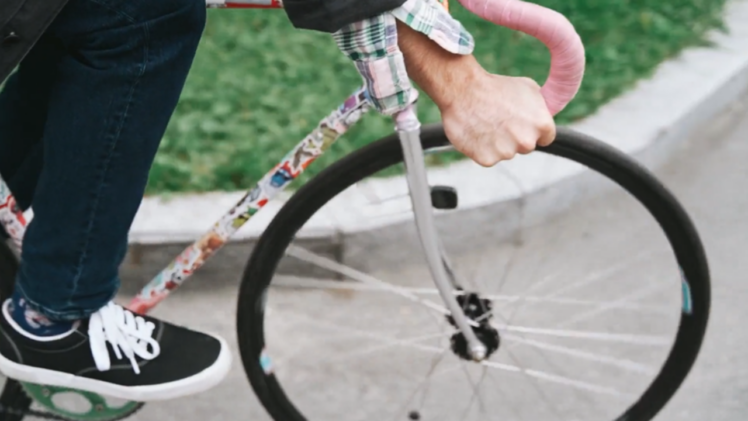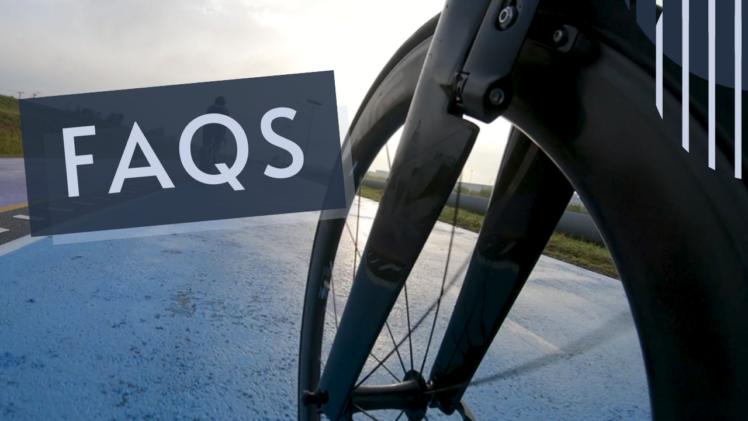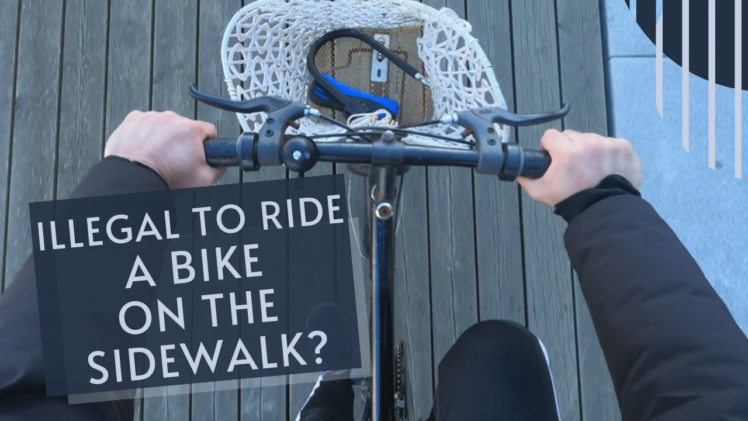Bicycling on the sidewalk is a common practice in many cities around the world. It’s a great way to get around town without having to deal with traffic, and it’s especially popular among seniors and children who may not be able to safely ride on the street.
Although biking on the sidewalk is generally considered legal, there are certain jurisdictions that may consider it illegal. In this article, we will explore whether or not biking on the sidewalk is illegal in your city, and if so, what you can do about it.
What are the rules for riding a bike on a sidewalk?
If you’re riding your bike on the sidewalk, there are a few rules you need to know. First and most importantly, always obey traffic laws when biking – whether you are on the street or on the sidewalk. Also, be aware of pedestrians.
If there is a bike lane or path available, use it! Riding on the sidewalk can be dangerous and uncomfortable, and it’s better to avoid it altogether.
Be aware of property owners’ rights when it comes to their sidewalks. If you’re riding your bike on someone else’s property without their permission, they may have the right to ask you to leave.
What are the penalties for riding a bike on a sidewalk?
In some states, it is illegal to ride a bike on a sidewalk. The penalties for it can vary depending on the state, but they typically involve a fine and/or jail time. If you are ticketed or arrested for riding your bike on a sidewalk in violation of state law, make sure to consult with an experienced legal counsel.
Safety first!
Here are a few basic safety rules for riding a bike:
1. Always wear a helmet!
This is one of the most important safety rules when riding a bike. A helmet can help protect your head from getting hit by debris or other riders, and can also prevent serious injuries if you fall off your bike.
2. Obey traffic laws!
Always ride with caution on busy streets and intersections, and don’t stay behind too long in traffic. The same goes for trails—stay aware of oncoming cyclists and pay attention to warning signs that tell you when it’s safe to cross the trail (ie: no cars in sight).
3. Obey stop signs and red lights!
When you come to a stop at an intersection or stop sign, always look both ways before proceeding—even if it looks like the intersection or stop sign isn’t currently manned by any pedestrians or drivers. And always yield to people crossing streets in front of you—especially if they’re using the pedestrian crosswalk!

4. Be aware of your surroundings!
When you’re riding your bike, pay close attention to where you’re going and what’s around you. Avoid making sudden turns or stopping in unexpected places—these actions could lead to accidents.
5. Be patient!
It can take some time to get used to riding a bike, and you may make mistakes along the way. Don’t get discouraged—just keep practicing, and you’ll soon be biking like a pro!
6. Be aware of wildlife when biking in rural areas or near lakes or rivers.
Wildlife may cross the bike path unexpectedly, so be alert for animals crossing your path and keep an eye out for falling branches or logs that could injure you while biking.
7. Exercise caution when riding down icy streets or ramps:
It’s easy to lose your balance on an icy surface and fall over (or worse!). always use caution when crossing busy streets as well – pull off to the side if there is any doubt about whether it’s safe to proceed!
Also read our article on the best bikes for an overweight person.
Tips for beginners

If you’re just getting started, here are a few tips to keep in mind:
- Make sure your bike is fit for your height and weight. You should be able to comfortably sit with both feet on the ground when you’re riding.
- Get used to cycling in a straight line, keeping your head up, and looking ahead. It’ll make it easier to stay on course and avoid obstacles.
- Practice starting and stopping smoothly, so you don’t get too rattled when things get hairy.
- Stay alert for pedestrians, animals, potholes, and other cyclists on the road. Look out for them before they look out for you!
- Respect traffic regulations — always obey the rules of the road! — and stay safe while cycling.
- Enjoy the experience! Cycling is a great way to get exercise, reduce stress, and make friends.
Choose the right bike for you
If you’re new to biking, here are some basic rules to follow when choosing a bike:
-Make sure the bike is fit for your height and weight.
-Bicycles come in all shapes and sizes, so it’s important to find one that fits your body well. You might want to try on different bikes at a store or rent one for a few minutes to see which one feels the best.
-The gears on a bike should be appropriate for your level of experience. If you’re just starting out, stick with a bicycle with lower gears. As you get more comfortable riding, you can graduate up to a bicycle with higher gears.
FAQs

1. Can you ride bikes on the sidewalk in Chicago?
Bike riding is not allowed on the sidewalk in Chicago.
2. What states allow riding bikes on sidewalks?
In most states, bicycles can be ridden on sidewalks if the bike is being ridden slowly and the rider is otherwise following the same traffic laws as cars. In other words, if you are riding your bike at a normal walking speed and obey all traffic signals and signs, you are probably okay biking on the sidewalk.
3. Is it illegal to ride a bike on the sidewalk in Canada?
Yes, cyclists are not allowed to ride their bikes on the sidewalk in Canada. They are only allowed to ride on the road or bike lanes.
Conclusion
There is no one-size-fits-all answer to this question, as the law varies from state to state. However, riding a bike on the sidewalk is generally allowed in most jurisdictions, with certain exceptions (like if the sidewalk is for pedestrian use only). If you’re not sure whether or not biking on the sidewalk is legal in your area, it’s always best to check with local authorities first.

